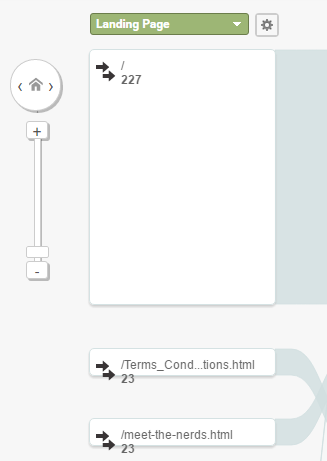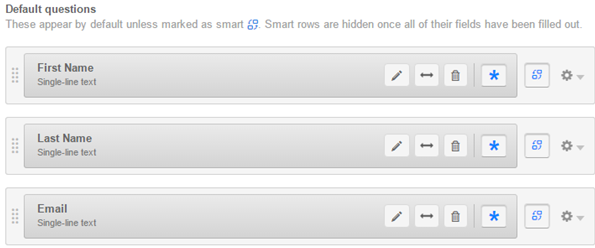What is a Landing Page?
There is a little confusion around this subject (hence this post). If you type this question into Google it will give you the answer:
"A web page which serves as the entry point for a website or a particular section of a website."
Which seems reasonable – visitors land on it, therefore its a landing page. In fact if you dive into Google Analytics and look at behaviour flow you’ll see something like this:

But here come the new guys on the block; the likes of HubSpot and others with their Marketing Automation and Inbound Marketing “new speak”. They have come up with a slightly different definition.
Their definition is about pages built for one purpose with a form at the bottom. A page that you want to drive (or attract) your website visitors to that will convert website visitors into leads.
The new definition says that a landing page needs to fulfil two criteria to earn its’ name:
- It must have a form
- It must exist solely for capturing a visitor’s information through that form.
If, like me, you were happy with the Google definition of a landing page, let me give you the low-down on the new idea.
So, My Contact Page is a Landing Page, Right?
Wrong!
Yes, it does have a contact form on it. And yes, you really do want people to fill it in so that you get lots of lovely leads. But that is not its sole purpose*. It also exists to give out information to show you where you are based (maybe with a map), and what your phone number is (or numbers are).
The HubSpotty definition is a little bit tighter than that. For example, the content on the landing page should all be focused on one thing – persuading the site visitor that they need to fill out the form to take up the offer (whatever it is).
Since everything is focussed on getting the form filled in, there can be no distractions. This means that standard menu navigation to the other pages within the website is not allowed on landing pages.
Persuading your site visitors to part with their valuable contact information is an art. Potential customers whose details you don’t yet know can be turned into valuable leads through carefully crafted landing pages. But what will make them cross that anonymity threshold and give up their name and email address?
Landing Page Offers that B2B Visitors Will Exchange Contact Details for Newsletter Sign Up
Everyone’s familiar with this one. In exchange for your email address and first name your visitor gets your regular monthly bulletin or newsletter.
Entry to a Competition
They want to be in the draw for the big prize. All they need to do is leave their contact details. And if the prize is a physical thing which needs to be delivered to the winner, you’ll be needing their address details too. Just make sure that the prize is relevant for your audience (check those personas). And be aware that prizes sometimes can attract the ‘wrong sort’ of visitors: People who are just after the free shiny thing, rather than looking for a longer-term relationship with your organisation.
An EBook
This is widely used in inbound marketing and for good reason. What most of your visitors are looking for is help to understand their issues, and help to evaluate the possible solutions. If you can produce content that helps them do that in an eBook, that is exactly the kind of content that visitors are happy to exchange their contact details for.
Webinar Registration
Some people prefer to learn by watching videos, or listening to people speak. Essentially you could make a webinar version of your eBook above. Some people just prefer to listen to someone talk through the issues and the solutions. If you can be the business that is providing that service for them, then you are well placed to be known, liked and trusted.
Intelligent Forms for Landing Pages
Arguably the most important part of a landing page is the form that we want the visitor to complete. How do we maximise the likelihood that this will convert into a lead? Most Marketing Automation Systems these days have intelligent forms.
If the site visitor has already crossed the anonymity threshold and we have their email address, then we can track their behaviour. So, if they make it to our landing page then we can pre-fill the form with all the data that we already have. Then they only have to fill in the blanks.
Some marketing automation systems also make it easy to hide fields off the form if we already have the data for that field. So, the number of fields that the user must fill in is reduced. Here is a screen shot from HubSpot which calls these “smart fields”.

Pre-filled or reduced field forms always increase the likelihood of the form being completed because the visitor sees that they have less work to do to get what they want.
So, that was a whistle-stop tour of what a landing page is with a few examples of content that visitors will swap their contact details to get hold of. If you need help writing compelling copy for your landing pages, or you’d like to talk about an Inbound strategy for your organisation, just let us know.


